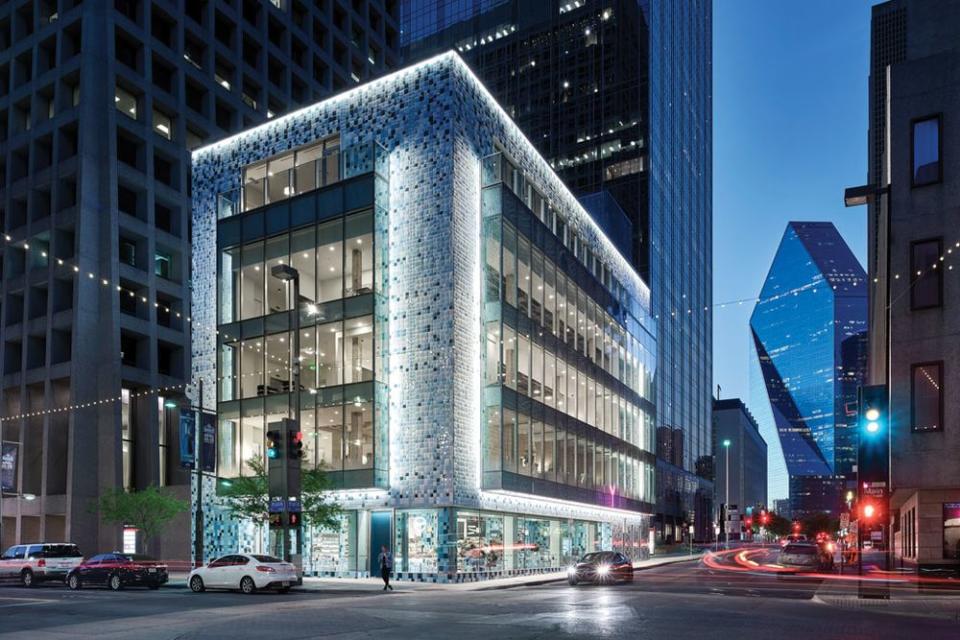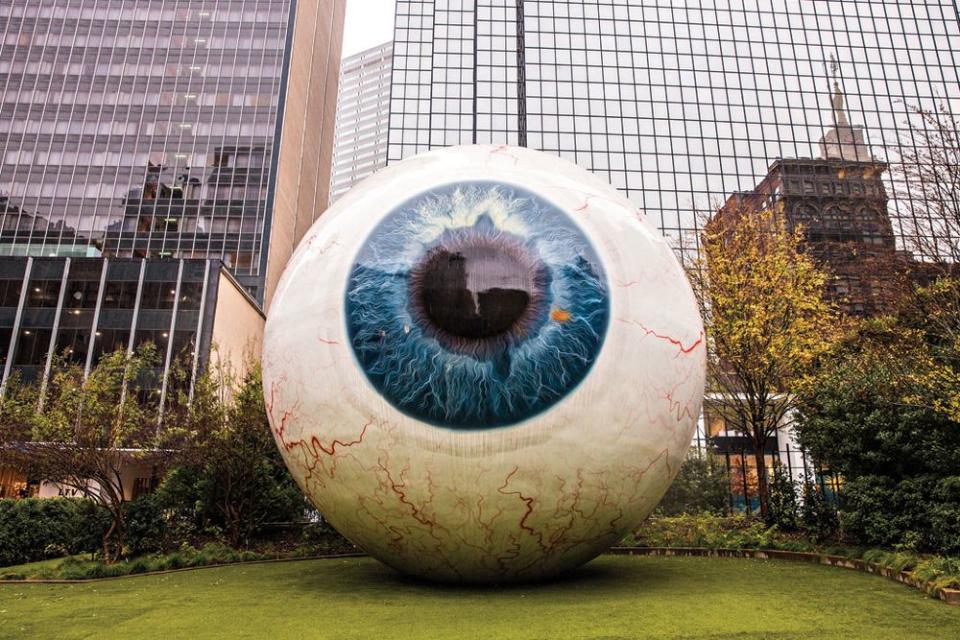The Billionaire Who Is Trying to Make Dallas Trendy
When Tim Headington was 13 years old, his father proposed that he skip school and accompany him on a business trip to Dallas, a four-hour drive from their Oklahoma City home. Like many teenagers, Headington didn’t need much convincing.
Approaching the city, on Interstate 35, they saw a sign that read, “Welcome President and Mrs. Kennedy.” They diverted downtown to see the parade. “At that time, the city was just vibrant,” Headington recalls on a recent morning, standing on the same block of Main Street where he watched John F. Kennedy’s motorcade pass by 55 years ago. “It was 10 people deep on all sides.”
Of course, that day ended in tragedy. But watching the parade and observing the street life it fomented gave Headington an indelible impression of what a city could be. By the time he settled in Dallas, in 1984, the crowds he once saw were gone. The city’s well-heeled denizens had relocated to the suburbs and deigned to come downtown only to shop at the flagship Neiman Marcus department store, with its swift valet parking service.
Headington wondered if he could revive downtown’s grandeur. In 2004, the Dallas National Bank building, a neo-Gothic tower on the National Register of Historic Places, came on the market. It stood across the street from where Headington watched the 1963 parade. As with playing hooky, he didn’t need to be talked into it.

“I thought, How cool would it be to just have this building,” Headington says, “to create something that gives people a reason to come downtown and stay?”
That building is now the Joule hotel, the cornerstone of an artful, cosmopolitan downtown that Headington has been quietly building for the past 15 years. While the Joule retains its 1927 facade, its interior melds museum and fun house, with Murano glass mosaics and edgy works of art: engines corroded in copper sulfate and then painted blue; a pop art painting of parted lips.
Since opening the Joule in 2008, Headington has had a hand in more than a dozen design-centric destinations in downtown Dallas, including restaurants, bars, shops, another hotel, an apartment building, and, most arrestingly, a public park with a 30-foot-tall bloodshot eyeball by the sculptor Tony Tasset.
“We didn’t know whether people would like it or hate it, but we knew they would have a reaction to it,” Headington says.
Tall and burly, with shaggy hair, ruddy cheeks, and a warm drawl, Headington may not fit the stereotype of a champion for art, design, and thoughtful urbanity. He can be one thanks to his day job: cofounder of Headington Energy Partners, the oil and gas company that made him a billionaire. But his aesthetic and his vision are changing Dallas for the better, says Dallas Mayor Mike Rawlings, and ushering in a wave of fellow developers bent on bringing the suburban masses back downtown.

“Tim, in some ways, is a modern-day Stanley Marcus,” says Rawlings, referencing the late president of Neiman Marcus.
“He does everything with such quality, panache, and taste, and he does it thinking about the future. He does it not expecting to flip his properties. He wants to own them for the long term.”
Headington, 68, initially wanted to be a clinical psychologist. But his life took a big detour as he was pursuing a Ph.D. at the Fuller Theological Seminary in Pasadena. His father, who ran a small oil and gas operation in Oklahoma City with Headington’s uncle, was diagnosed with an acute form of leukemia. Headington rushed home; his father died within six weeks. “Not knowing anything, I figured, maybe if I can understand this business, I can help,” Headington says.
Trial and error led him to Dallas, and by 2004, Headington had made enough money that he could explore passion projects: not just revitalizing Dallas but also learning about and collecting art and financing Hollywood films like The Aviator and The Departed through GK Films, a production company he co-owned. In 2008 he sold land in North Dakota’s oil shale field to XTO Energy, now part of Exxon Mobil, for $1.85 billion.
“It’s really the success that I’ve had in the energy business that’s enabled me to take a risk on these things and to take a longer-term horizon,” he says.
Over the years, Headington Companies has invested more than half-a-billion dollars in redeveloping downtown Dallas. Two blocks from the Joule, there’s Commissary, a bustling cafe? and market whose facade is covered with 27,857 ceramic tiles in shades of blue. Across the street from the hotel is Forty Five Ten, a trendy boutique that sells things like $585 canvas pants and co ee mugs with oversize handles that recall the avant-garde sculptor Claes Oldenburg. The fourth-floor restaurant Mirador serves high-end renditions of deviled eggs (topped with caviar) and Tater Tots.

“You have to give rich people reasons to come down, and if they come down, they have to want to come back,” Headington says.
Not all of his design ideas have come to pass. One reject involved the Joule’s rooftop swimming pool, which juts out over Main Street. “We had a very wicked idea of running a little pipe that would drip water so that people underneath would go, ‘Oh, my God, the pool’s leaking!’ ” says Headington.
The prank is too out-there for now, but if he keeps pushing the envelope, maybe Dallas will be ready for it one day.
Destination Design:
When listing the nation’s top design hubs, people invariably include New York City, Los Angeles, and San Francisco. But in fact a number of smaller cities also have sizable communities of “designers,” a nebulous catchall term that applies to architects, product designers, graphic designers, interior designers, and industrial designers. Here are some of those designer-friendly cities:
COLUMBUS, INDIANA
This small town, pop. 48,000, is home to diesel-engine maker Cummins, which has an army of workers designing its traditional motors, along with ones powered by electricity, natural gas, and fuel cells. Oh, and by the way, the city also happens to be a mecca for modernist architecture, much of it funded by the company’s foundation.MINNEAPOLIS/ST. PAUL, MINNESOTA
The Twin Cities area is a hotbed of graphic design, a likely legacy of its large number of ad and marketing companies.CINCINNATI, OHIO
The city is home to a number of design firms like ad agency Rockfish Digital and Jack Rouse, which designs public attractions including museum exhibits and water slides. Graduates of the University of Cincinnati’s art and design programs help fill the demand for talent.
A version of this article appears in the January 2019 issue of Fortune with the headline “The Dean of Dallas Design.”
